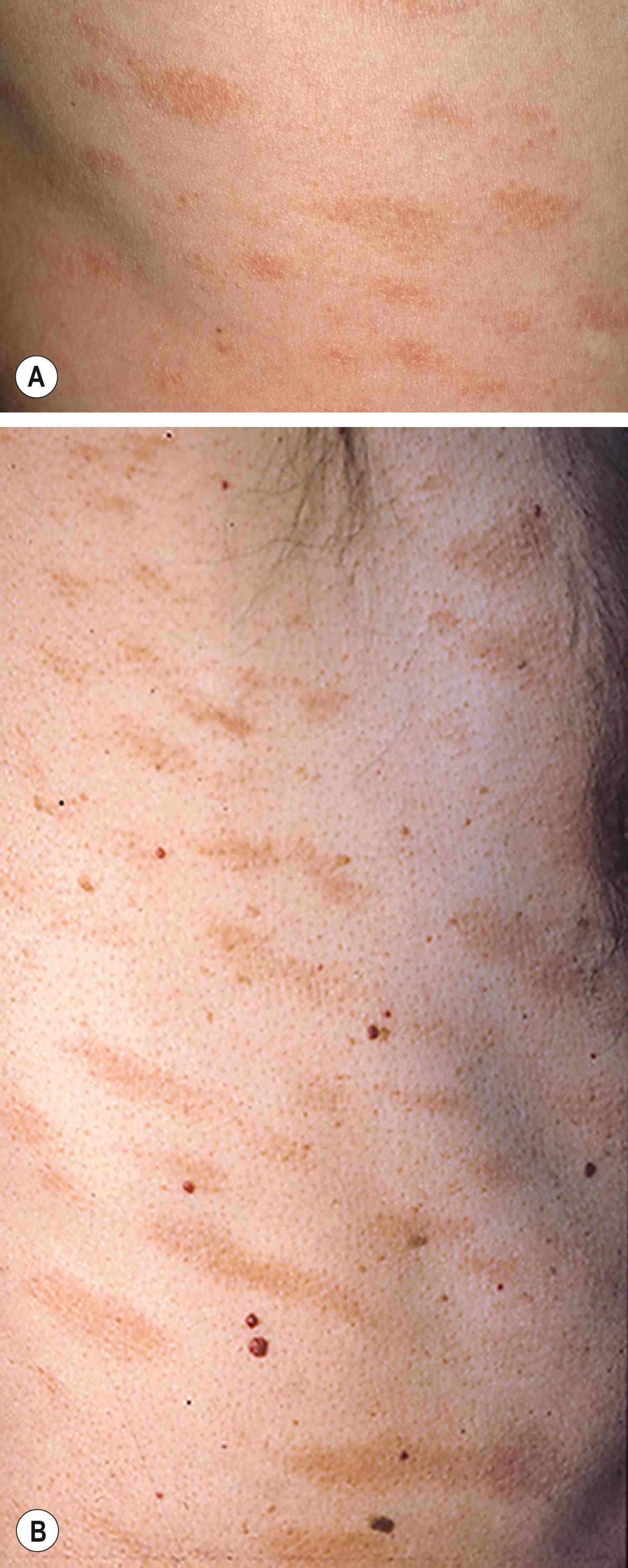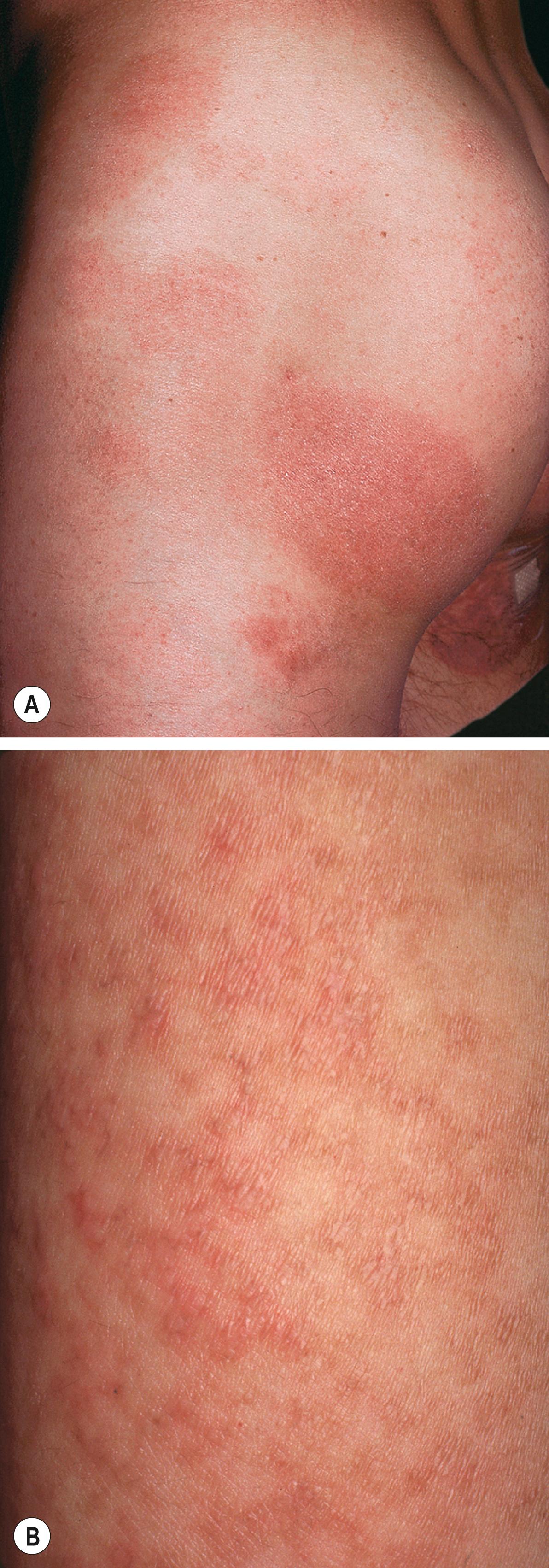Physical Address
304 North Cardinal St.
Dorchester Center, MA 02124
Chronic, usually asymptomatic patches or thin plaques with fine scale whose color varies from pink to red-brown; may have associated epidermal atrophy and occasionally poikiloderma (large plaque parapsoriasis).
Two major forms of parapsoriasis are small plaque (lesions usually <5 cm in diameter) and large plaque (usually >5 cm); digitate dermatosis is a form of the former, whereas retiform parapsoriasis is a variant of the latter ( Figs 7.1 and 7.2 ).


While the distribution may be limited or more generalized, there is a tendency for an increase in extent over time; large plaque parapsoriasis can favor the sun-protected “girdle” area; both forms usually occur in adults.
Controversy exists regarding the percentage of cases of large plaque parapsoriasis that eventually evolve into mycosis fungoides.
Histologically, parakeratosis and nonspecific spongiotic dermatitis is seen in small and large plaque; large plaque may have a more lichenoid infiltrate.
An infiltrate of CD4 + T lymphocytes, often clonal, in large plaque > small plaque parapsoriasis, leading to the term “clonal dermatitis”.
DDx: small plaque – pityriasis rosea (PR), PR-like drug eruption, pityriasis lichenoides chronica, guttate psoriasis, secondary syphilis; large plaque parapsoriasis – patch stage mycosis fungoides (MF), MF-like drug eruption; if a few lesions, consider tinea corporis.
Rx: topical CS, sunlight, phototherapy (e.g. NB-UVB).
Become a Clinical Tree membership for Full access and enjoy Unlimited articles
If you are a member. Log in here